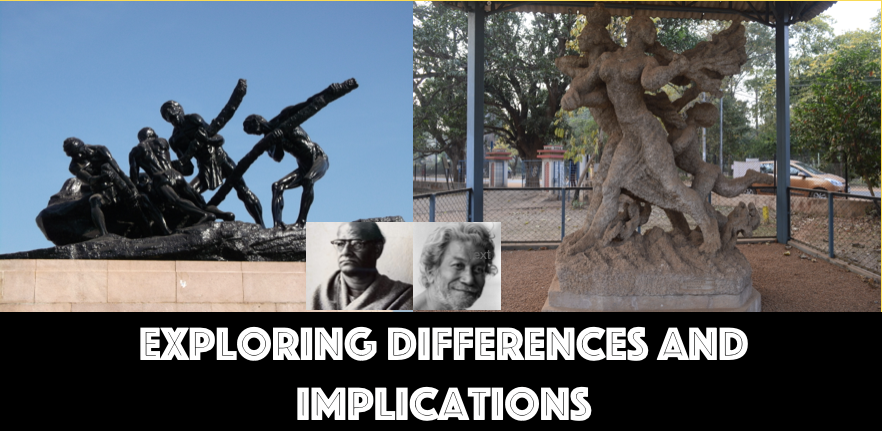The artistic works of D.P. Roy Chowdhury and Ramkinker Baij have captivated the art world, each with their unique perspectives on the labouring class and the complexities of modernity. Partha Mitter’s observations comparing the two artists raise thought-provoking questions about their differences and the implications of their artistic visions. This article delves into their works, focusing on D.P. Roy Chowdhury’s “Triumph of Labour” and Ramkinker’s “Mill Call,” to analyse the nuances of their approaches and the broader cultural and ideological contexts in which they operated.
D.P. Roy Chowdhury: Romantic Realism and the Heroism of Labor
D.P. Roy Chowdhury’s monumental works celebrated the trials and triumphs of the labouring man. His artistic expression portrayed a sympathetic connection to the salt of the earth, drawing inspiration from nineteenth-century Romantic notions of struggling humanity. Through his renowned sculpture “Triumph of Labour,” Chowdhury aimed to represent universal labor and recognise the role of the working class in constructing India as a modern nation. The sculpture abstracts the specificities of regional, religious, caste, and ethnic identities, emphasising the heroic role of the working class in forging a homogenous unity in the nation-state.

Ramkinker: The Subaltern’s Perspective and Embracing Modernity
In contrast to Chowdhury, Ramkinker’s artistic vision transcended the primitivist idealisation of the labouring masses as an unchanging community. His works, such as “Mill Call,” portrayed the everyday realities of the working class entangled in multiple forms of identity, including ethnicity, caste, and gender. Ramkinker approached modernity from the subaltern’s point of view, presenting it as an emancipatory discourse and a means to break away from oppressive traditional social systems. The sculpture’s vibrant rhythm symbolises the modern order of time and represents a departure from the primitivist discourse of the nationalist intelligentsia.

Implications of Interpretation
Mitter’s observations about the differences between Chowdhury and Ramkinker shed light on the cultural politics surrounding their works. The recurring evocation of binary logics, such as cultured/anarchic, literate/illiterate, or man/animal, attempts to appropriate Ramkinker into the formalist nationalist modernist canon. By diluting his marking of differences and denying his subjecthood and intellectual engagement, institutions aim to create a pseudo-democratic space that aligns with their own agendas. This disorienting process shields the urban intelligentsia from the ideological challenges posed by Ramkinker’s critical perspective on modernism.
Conclusion
The artistic visions of D.P. Roy Chowdhury and Ramkinker represent distinct approaches to portraying the labouring class and grappling with the complexities of modernity. While Chowdhury’s “Triumph of Labour” epitomises a romanticised ideal of labor and national unity, Ramkinker’s “Mill Call” offers a subaltern perspective that embraces modernity as a liberating force. Understanding the implications of these interpretations allows for a deeper appreciation of the artists’ works and the broader socio-cultural and ideological contexts in which they operated.

Iftikar Ahmed is a New Delhi-based art writer & researcher.





